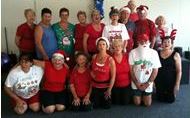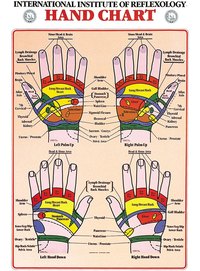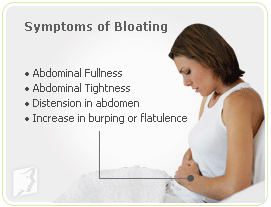 Detoxing is a scam.
Detoxing is a scam.
“You can’t detox your body. It’s a myth.”
This article first appeared in the Guardian, December 5th 2014.
There’s no such thing as ‘detoxing’. In medical terms, it’s a nonsense. Diet and exercise is the only way to get healthy. But which of the latest fad regimes can really make a difference?
Whether it’s cucumbers splashing into water or models sitting smugly next to a pile of vegetables, it’s tough not to be sucked in by the detox industry. The idea that you can wash away your calorific sins is the perfect antidote to our fast-food lifestyles and alcohol-lubricated social lives. But before you dust off that juicer or take the first tentative steps towards a colonic irrigation clinic, there’s something you should know: detoxing – the idea that you can flush your system of impurities and leave your organs squeaky clean and raring to go – is a scam. It’s a pseudo-medical concept designed to sell you things.
“Let’s be clear,” says Edzard Ernst, emeritus professor of complementary medicine at Exeter University, “there are two types of detox: one is respectable and the other isn’t.” The respectable one, he says, is the medical treatment of people with life-threatening drug addictions. “The other is the word being hijacked by entrepreneurs, quacks and charlatans to sell a bogus treatment that allegedly detoxifies your body of toxins you’re supposed to have accumulated.”
If toxins did build up in a way your body couldn’t excrete, he says, you’d likely be dead or in need of serious medical intervention. “The healthy body has kidneys, a liver, skin, even lungs that are detoxifying as we speak,” he says. “There is no known way – certainly not through detox treatments – to make something that works perfectly well in a healthy body work better.”
Much of the sales patter revolves around “toxins”: poisonous substances that you ingest or inhale. But it’s not clear exactly what these toxins are. If they were named they could be measured before and after treatment to test effectiveness. Yet, much like floaters in your eye, try to focus on these toxins and they scamper from view. In 2009, a network of scientists assembled by the UK charity Sense about Science contacted the manufacturers of 15 products sold in pharmacies and supermarkets that claimed to detoxify. The products ranged from dietary supplements to smoothies and shampoos. When the scientists asked for evidence behind the claims, not one of the manufacturers could define what they meant by detoxification, let alone name the toxins.
Yet, inexplicably, the shelves of health food stores are still packed with products bearing the word “detox” – it’s the marketing equivalent of drawing go-faster stripes on your car. You can buy detoxifying tablets, tinctures, tea bags, face masks, bath salts, hair brushes, shampoos, body gels and even hair straighteners. Yoga, luxury retreats, and massages will also all erroneously promise to detoxify. You can go on a seven-day detox diet and you’ll probably lose weight, but that’s nothing to do with toxins, it’s because you would have starved yourself for a week.
Then there’s colonic irrigation. Its proponents will tell you that mischievous plaques of impacted poo can lurk in your colon for months or years and pump disease-causing toxins back into your system. Pay them a small fee, though, and they’ll insert a hose up your bottom and wash them all away. Unfortunately for them – and possibly fortunately for you – no doctor has ever seen one of these mythical plaques, and many warn against having the procedure done, saying that it can perforate your bowel.
Other tactics are more insidious. Some colon-cleansing tablets contain a polymerising agent that turns your faeces into something like a plastic, so that when a massive rubbery poo snake slithers into your toilet you can stare back at it and feel vindicated in your purchase. Detoxing foot pads turn brown overnight with what manufacturers claim is toxic sludge drawn from your body. This sludge is nothing of the sort – a substance in the pads turns brown when it mixes with water from your sweat.
“It’s a scandal,” fumes Ernst. “It’s criminal exploitation of the gullible man on the street and it sort of keys into something that we all would love to have – a simple remedy that frees us of our sins, so to speak. It’s nice to think that it could exist but unfortunately it doesn’t.”
That the concept of detoxification is so nebulous might be why it has evaded public suspicion. When most of us utter the word detox, it’s usually when we’re bleary eyed and stumbling out of the wrong end of a heavy weekend. In this case, surely, a detox from alcohol is a good thing? “It’s definitely good to have non-alcohol days as part of your lifestyle,” says Catherine Collins, an NHS dietitian at St George’s Hospital. “It’ll probably give you a chance to reassess your drinking habits if you’re drinking too much. But the idea that your liver somehow needs to be ‘cleansed’ is ridiculous.”
The liver breaks down alcohol in a two-step process. Enzymes in the liver first convert alcohol to acetaldehyde, a very toxic substance that damages liver cells. It is then almost immediately converted into carbon dioxide and water which the body gets rid of. Drinking too much can overwhelm these enzymes and the acetaldehyde buildup will lead to liver damage. Moderate and occasional drinking, though, might have a protective effect. Population studies, says Collins, have shown that teetotallers and those who drink alcohol excessively have a shorter life expectancy than people who drink moderately and in small amounts.
“We know that a little bit of alcohol seems to be helpful,” she says. “Maybe because its sedative effect relaxes you slightly or because it keeps the liver primed with these detoxifying enzymes to help deal with other toxins you’ve consumed. That’s why the government guidelines don’t say, ‘Don’t drink’; they say, ‘OK drink, but only modestly.’ It’s like a little of what doesn’t kill you cures you.”
This adage also applies in an unexpected place – to broccoli, the luvvie of the high-street “superfood” detox salad. Broccoli does help the liver out but, unlike the broad-shouldered, cape-wearing image that its superfood moniker suggests, it is no hero. Broccoli, as with all brassicas – sprouts, mustard plants, cabbages – contains cyanide. Eating it provides a tiny bit of poison that, like alcohol, primes the enzymes in your liver to deal better with any other poisons.
Collins guffaws at the notion of superfoods. “Most people think that you should restrict or pay particular attention to certain food groups, but this is totally not the case,” she says. “The ultimate lifestyle ‘detox’ is not smoking, exercising and enjoying a healthy balanced diet like the Mediterranean diet.”
Close your eyes, if you will, and imagine a Mediterranean diet. A red chequered table cloth adorned with meats, fish, olive oil, cheeses, salads, wholegrain cereals, nuts and fruits. All these foods give the protein, amino acids, unsaturated fats, fibre, starches, vitamins and minerals to keep the body – and your immune system, the biggest protector from ill-health – functioning perfectly.
So why, then, with such a feast available on doctor’s orders, do we feel the need to punish ourselves to be healthy? Are we hard-wired to want to detox, given that many of the oldest religions practise fasting and purification? Has the scientific awakening shunted bad spirits to the periphery and replaced them with environmental toxins that we think we have to purge ourselves of?
Susan Marchant-Haycox, a London psychologist, doesn’t think so. “Trying to tie detoxing in with ancient religious practices is clutching at straws,” she says. “You need to look at our social makeup over the very recent past. In the 70s, you had all these gyms popping up, and from there we’ve had the proliferation of the beauty and diet industry with people becoming more aware of certain food groups and so on.
“The detox industry is just a follow-on from that. There’s a lot of money in it and there are lots of people out there in marketing making a lot of money.”
Peter Ayton, a professor of psychology at City University London, agrees. He says that we’re susceptible to such gimmicks because we live in a world with so much information we’re happy to defer responsibility to others who might understand things better. “To understand even shampoo you need to have PhD in biochemistry,” he says, “but a lot of people don’t have that. If it seems reasonable and plausible and invokes a familiar concept, like detoxing, then we’re happy to go with it.”
Many of our consumer decisions, he adds, are made in ignorance and supposition, which is rarely challenged or informed. “People assume that the world is carefully regulated and that there are benign institutions guarding them from making any kind of errors. A lot of marketing drip-feeds that idea, surreptitiously. So if people see somebody with apparently the right credentials, they think they’re listening to a respectable medic and trust their advice.”
Ernst is less forgiving: “Ask trading standards what they’re doing about it. Anyone who says, ‘I have a detox treatment’ is profiting from a false claim and is by definition a crook. And it shouldn’t be left to scientists and charities to go after crooks.”
Articles sourced from:
http://www.theguardian.com/lifeandstyle/2014/dec/05/detox-myth-health-diet-science-ignorance


















 combining to create
combining to create We will have special offers, special events, special times & small gifts to thank our ambassadors, so grab your diary & book out a morning of fitness & fun for everyone.
We will have special offers, special events, special times & small gifts to thank our ambassadors, so grab your diary & book out a morning of fitness & fun for everyone.




 Great News the Big Balls N Bands sessions start again 9.30 Wednesdays from 6th August. These ever popular sessions are now available to you in the form of a 12 week Group Personal Training Program from the core queen Jacqui.
Great News the Big Balls N Bands sessions start again 9.30 Wednesdays from 6th August. These ever popular sessions are now available to you in the form of a 12 week Group Personal Training Program from the core queen Jacqui. belly plus really good fun and totally time efficient.
belly plus really good fun and totally time efficient. Your health is in your hands this month when you attend our hand reflexology sessions with our resident Massage Therapist Ange Hernandez.
Your health is in your hands this month when you attend our hand reflexology sessions with our resident Massage Therapist Ange Hernandez.
 it produces the same positive effects on the brain as meditation. Hand reflexology has also been shown to:~ be beneficial for the heart.
it produces the same positive effects on the brain as meditation. Hand reflexology has also been shown to:~ be beneficial for the heart.





